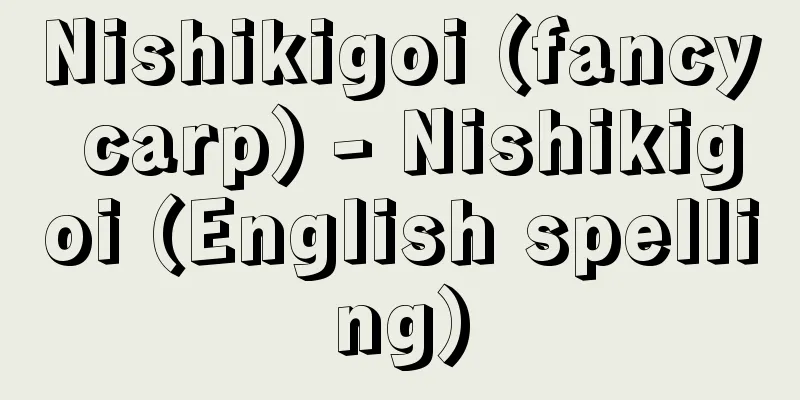Multiplication table - Kuku

|
Usually, this refers to the multiplication or multiplication tables. These are the results of multiplication of single-digit integers (from 1 to 9) arranged in an order that makes them easier to remember. There are 9 in each of the 1st row (from "11 - 1" to "19 - 9"), 2nd row, ..., 9th row, for a total of 81. These tables are sometimes called the total multiplication tables. In this case, for example, if we take the 2nd row, the multiplicand is a constant 2, and the multiplier increases by 1 each time, so the result increases by 2 times the multiplicand, as in "21 - 2", "22 - 4", and "23 - 6". Since the commutative law holds in multiplication, it is thought that "23 - 6" and "32 - 6" have the same result, and one of the total multiplication tables can be omitted. This allows us to limit the total multiplication tables to those where the multiplicand is equal to or less than the multiplier. The first row has nine numbers, the second row has eight numbers from "22-4" to "29-18", the third row has seven numbers from "33-9"... and the ninth row has just "99-81", for a total of 45 numbers, which is called the restricted multiplication table or half multiplication table. From the Meiji to Taisho periods, restricted multiplication tables were taught in elementary school arithmetic, but in the Showa period, total multiplication tables began to be taught. Multiplication tables are not only used to immediately find the result of multiplication of single-digit numbers, but are also used in multiplication calculations with many digits, and In addition to the multiplication tables, there are also division tables, which were once widely used. These tables are convenient for division using the abacus, and were used in Japanese mathematics. Furthermore, for a period after the Second World War, the addition tables were taught. These tables organize the results of adding one-digit integers together, following the multiplication tables. However, this term is no longer used today. [Tatsuro Miwa] Source: Shogakukan Encyclopedia Nipponica About Encyclopedia Nipponica Information | Legend |
|
普通、乗法九九あるいは掛け算九九のことをいう。これは、1桁(けた)の整数(1から9まで)どうしの乗法の結果を、順序よく配列して、覚えやすくしたものである。1の段(「11―1」から「19―9」まで)、2の段、……、9の段まで、それぞれが9個ずつ、合計81個ある。この全体を総九九ということがある。この場合、たとえば、2の段をとると、「21―2」「22―4」「23―6」のように、被乗数は一定数2で、乗数が1ずつ増していき、結果が被乗数の2ずつ増える仕組みになっている。乗法では、交換法則が成り立つから、総九九のなかで、「23―6」と「32―6」は結果は同一で一方は省いてもよいと考えられる。そうすると、総九九のうち、被乗数が乗数以下のものだけに限ることができる。1の段は9個、2の段は「22―4」から「29―18」まで8個、3の段は「33―9」からの7個……と9の段の「99―81」だけの合計45個にしたものを、制限九九または半九九という。明治期から大正期までは、小学校算術では制限九九を教えたが、昭和期に入って、総九九を教えるようになっている。乗法九九は1桁の数の乗法結果をただちに知るのに使われるだけでなく、桁数の多い乗法の計算にも使われ、また、 九九には、乗法九九のほか、割り算九九もあり、広く使われていたことがある。これは、珠算で除法を行うとき便利な仕組みになっているもので、和算で利用された。さらに、第二次世界大戦後の一時期、加法九九を教えたことがある。これは、1桁の整数どうしの加法の結果を、乗法九九に倣って整理したものである。しかし今日このことばは使われない。 [三輪辰郎] 出典 小学館 日本大百科全書(ニッポニカ)日本大百科全書(ニッポニカ)について 情報 | 凡例 |
Recommend
Engyō - Engyō
Year of death: 29 March 852 Year of birth: Enryaku...
recitativo accompagnato (English spelling) recitativo accompagnato
...It is accompanied only by basso continuo and l...
Exchange Rates - Exchange
Also known as exchange rate. It is the exchange ra...
Colored mortar - Iromorutaru
…The cement used to make mortar is usually Portla...
Conga - Conga (English spelling)
A cylindrical or barrel-shaped single-sided drum ...
Theory of action at a distance
...This type of action is called action at a dist...
Kabukiza - Kabukiza
Theater. Built in November 1889 (Meiji 22) in Kob...
Anhan County - Anhan County
…A city in the eastern part of Sichuan Province, ...
Nishijin
A general term for the area centered around Imade...
Odawara Salt Wholesaler - Odawara Shiodoiya
…This is an example from Ako in Banshu, but the s...
Sand painting
〘 noun 〙 A picture drawn by pouring sand onto the ...
Masayuki Yui (Masayuki Yui)
1605‐51 (Keicho 10‐Keian 4) A ronin military schol...
cracking
A general term for the reactions and operations t...
Ostermayer, H.
… [Michitaka Takagi] 【music】 [Art Music] The deve...
Court Literature
A term in the history of European literature, it ...









